‘They’re so damn reliable’, says veteran mechanic Craig Salmon. In the second Green Recovery feature, we look at what’s stopping Australia from embracing EVs
Craig Salmon rattles off the benefits of electric cars with the swagger of a veteran car mechanic and the zeal of someone who is watching a profound historic change play out on his workshop floor.
“You ever look under the hood of one?” he asks. “They’re spectacularly simple. You’ve obviously got to be careful to not fry yourself with 1,000 volts, but day-to-day they’re far nicer to work on. You don’t get your hands dirty because there’s no oil. They don’t have exhausts. They don’t have turbos. They don’t have all the things that break on petrol cars.”
Salmon’s workshop is near Kingston, on the outskirts of Hobart, Tasmania, and although French cars are his speciality, he’s retraining to work on electric vehicles, which are rolling through his doors in greater numbers.
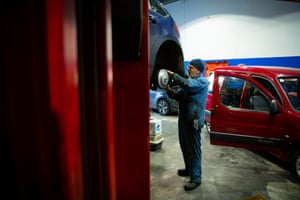
Two years ago the 57-year-old bought a second-hand Nissan Leaf from Japan before there was any easy way of doing so. Since then 15 of his regular customers have made the transition to electric – often after he let them take his car for a test drive.
"You get 100% of the torque with zero rpm. So right off the lights, it’s got a stack of performance"
“After the first 10 minutes, their eyes pop and then they go, ‘Holy shit!’” Salmon says. “It’s just a pleasure to drive.
“The thing no one tells you about electric cars is you get 100% of the torque with zero rpm. So right off the lights, it’s got a stack of performance.
“The real problem right now is the price. Not everyone can afford to buy new. The kicker for a lot of people at the moment are the low volumes of second-hand cars – this is what the Good Car Company guys are trying to do.”

Some 4.79m electric cars were sold worldwide in 2019, according to International Energy Agency figures, but Australia has been slow to embrace the trend. Of 19.9m cars on the road in 2020, the Australian Bureau of Statistics records just 14,253 as electric.
To date, a critical reason has been a lack of political leadership, with the federal Coalition’s “technology neutral” approach to electric cars swinging periodically between neglect and hostility.
This has led to a degree of inertia within the Australian car market where the lack of clear regulations has turned the country into a dumping ground for petrol engines that can no longer be sold in other jurisdictions.
"It would be very smart to be at the forefront of the electric vehicle and autonomous vehicle revolution"
Flinders University’s Prof John Spoehr, the director of the Australian Industrial Transformation Institute, says this doesn’t have to be the case.
“The great thing about focusing on the growth of a green vehicle fleet in Australia is that it really utilises or makes use of the extraordinary skills base we still have in this nation following the close of the automotive industry,” Spoehr says.
“Much of that capability is underutilised. At this point in time, when there’s a lot of underutilised capability everywhere, it would be very smart to be at the forefront of the electric vehicle and autonomous vehicle revolution.”
One way to achieve this, Spoehr says, is to roll out charging infrastructure through a stimulus program that treats it as a national commitment similar to the NBN.
“There’s a lot of jobs in this,” Spoehr says. “So far we’ve been pretty slow in rolling out the necessary charging infrastructure to support [the] change [from petrol to electric].”

The solution seems obvious to Anthony Broese van Groenou: flood the market with good quality, second-hand electric cars.
Broese van Groenou is a co-founder of the Tasmanian-based start-up the Good Car Company. As an idea, it began over beers at a North Hobart pub in mid-March last year when Broese van Groenou, whose background is in community-owned renewable energy, was talking with his co-founders – energy consultant Anton Vikstrom and environmental scientist Sam Whitehead – about how best to make electric cars more accessible.
“Our very first thought was that we should start converting conventional cars into electric vehicles,” says Broese van Groenou.
“We had a Toyota Hilux I was going to convert. I got to the point of ripping the motor out, but then saw all the labour involved in it. Then we thought: ‘wow, it would be so much easier and cheaper to import a really good car’.”
Investigating further, the trio took inspiration from New Zealand, where a thriving second-hand car market has brought down prices significantly even if the quality of imported vehicles has sometimes been mixed.
Using this basic model, they began to flesh out a plan to import large numbers of good quality, second-hand electric cars into Australia.
It was an idea that came with an attractive logic: the more cars they brought in, the more pressure big car companies would be under to lower their prices and expand their limited electric range.
Once a critical mass of electric cars is achieved, many other things become possible.
“The wonderful thing about electric cars is that they have the ability to unlock a lot of renewable power generation because they soak up a lot of the excess power generated during the day,” Broese van Groenou says. “And the cars not only absorb power, but discharge it into the home. It’s only happening in trials in Australia at the moment, but once there are regulations in place, they can support the grid.”
As technology develops, this will allow the cars to function like a battery-on-wheels, replacing the need for a separate battery to store energy produced from rooftop solar panels.
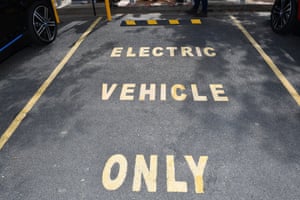
There have been multiple predictions about when the number of electric vehicles in Australia will grow to a meaningful level. But Cheryl Loone, the head of electric vehicle strategy development at the state’s electricity provider, TasNetworks, says the truth is: no one really knows. “We’re currently in a discovery phase,” she says.
“It’s not so much the number of vehicles across the state, it’s the concentration of vehicles that matter. From a network perspective that means concentrated community charging.”
When governments or companies invest in an entire fleet of electric vehicles, or when a company like the Good Car Company imports a batch into a community, it allows utility companies to get a valuable glimpse into consumer behaviour by learning how and when people charge their cars. This allows them to plan for and respond to demand, Loone says.
The bulk-buy model
The first challenge for the Good Car Company was getting hold of the cars. After weighing their options, the group began to source vehicles from Japan where the tax system encourages people to replace their cars only a few years after purchase.
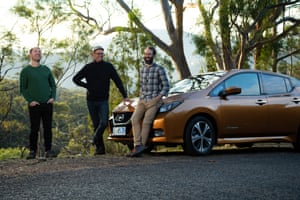
From there they contracted a Japanese firm to trawl auction houses and lists, carefully examine each listing for damage and ensuring the battery has a minimum 80% health. The ones that were in good nick were bought and prepared for transport.
Once they landed, the cars could then be sold to individual clients or groups of clients as part of community-specific “bulk-buy” programs. This is where the Good Car Company partners with a local council or community organisation to buy cars in batches for those who express interest.
Their efforts have so far brought down the cost to $20,000 for the smallest battery and up to $50,000 for batteries with maximum range.
"There’s such a social justice element to making electric vehicles really affordable as well"
In June 2019 the group imported their first car. In December that same year, they organised their first bulk buy with 22 participants, and have plans for another in the Shire of Hepburn – a 15,000-person community in regional Victoria working to become carbon-neutral by 2030.
There the Good Car Company partnered with Hepburn Wind – Australia’s first community-owned windfarm – whose manager, Taryn Lane, says they had 150 expressions of interest before the pandemic delayed its official rollout.
“Here we see ourselves as first movers,” Lane says. “We can make it happen, and then there is something for others to point to.
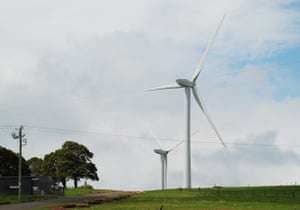
Broese van Groenou says the Hepburn bulk buy will go ahead when the pandemic resolves, along with others being planned for southern Tasmania, northern Tasmania, Canberra and North Sydney. In the meantime, as the Good Car company waits out Covid-19, it has finished up outstanding deliveries and begun investigating ways to scale-up the business.
“We’re looking at capturing 1% of the market which is about 150,000 cars sold annually,” he says. “Once you get a bit of traction like that, people start talking. They see them around. And then it’s easier to step up to the next step.”
“At that point, things really begin to change.”
The coronavirus pandemic has devastated the economy but also presented a unique opportunity: to invest in climate action that creates jobs and stimulates investment, before it’s too late. The Green Recovery features talk to people on the frontline of Australia’s potential green recovery.
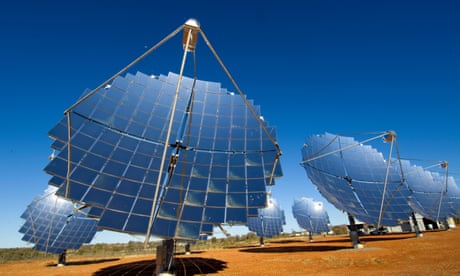
No comments:
Post a Comment